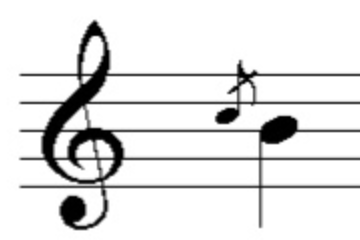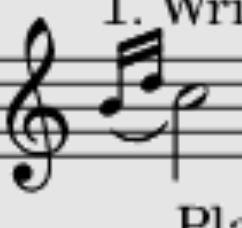Rondo from Sonata in C minor Op. 13
1/16
Earn XP
Description and Tags
List B
Name | Mastery | Learn | Test | Matching | Spaced |
|---|
No study sessions yet.
17 Terms
What does Allegro mean?
Fast and lively

What does this sign indicate?
Acciaccatura (crushed note)

What does this sign indicate?
Acciaccature
written-out slide
What does sf mean?
Sforzando = strong accent
What does sfp mean?
?? ask wong
What does dolce mean?
Sweetly

What is this sign?
Mezzo Staccato = moderately short and detached
What does calando mean?
Becoming softer and slower
What is a Sonata and Rondo?
Sonata = composition for one or more instruments in several contrasting movements
Sonata Op. 13 has three movements:
Grave - Allegro molto e con brio
Adagio cantabile
Rondo Allegro
titled ‘Grande Sonata’ because of nobility, Pathetique because of its tragic and passionate character
dedicated to Prince Carl (aristocratic patron)
What form is the piece in?
Sonata rondo form - ABACABA
sections B and C contain subtle references to the main theme
What period is this piece from?
Classical (1750-1820)
fortepiano
characteristics:
- homophonic (one clear melody line with subordinate accompniament)
balanced phrases
modulations ot clsoely related keys
classical formals structure
how does this piece exemplify features of its time period?
homphony
balanced phrases
modulations to closey related keys
classical formal structure
however, also an early manifestioation of beethovens romatnci style
passionate intensity
lyrical melodies
emotional reference in the title
who was beethoven
german composer from late classical period
born in 1770
died in 1827 at 56
deafness
lived without patronage from church or aristocracy
who were beethovens contemporareis?
haydn
mozart
schubert
what were beethovens other compositions?
for piano:
piano concertos e.g. the emperor
sonatas e.g. pathetique, moonlight
bagatelles e.g. fur elise
other:
symphonies e.g. eroica
concertos
overtues
opera
songs
how did beethovens compositional style change
earlier had a light, elegant classical style
short, balanced phrases
homphony
modulations to clsoely related keys
later works were more romantic
dramatic intensity
wider-ranging modulations
wider dynamic and pitch range
tell me about the pathetqiue sonata
grade sonata pathetqiue, op. 13
three movements
grave
adagio cantabile
rondo
called pathetique because of tragic and passionate character, grande bcasue dedicated to a prince